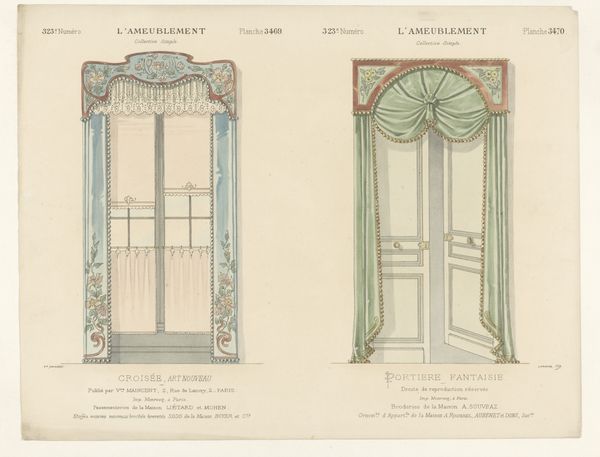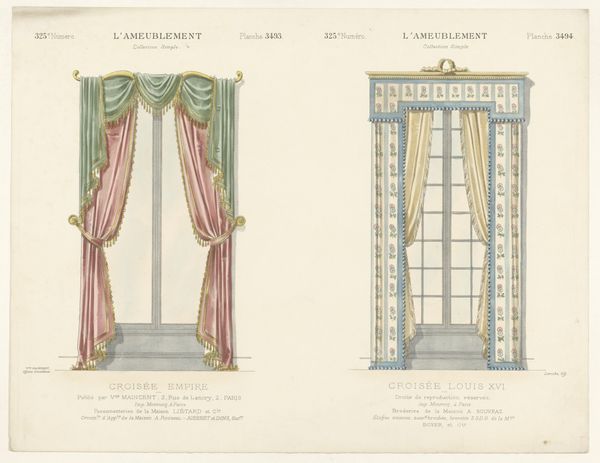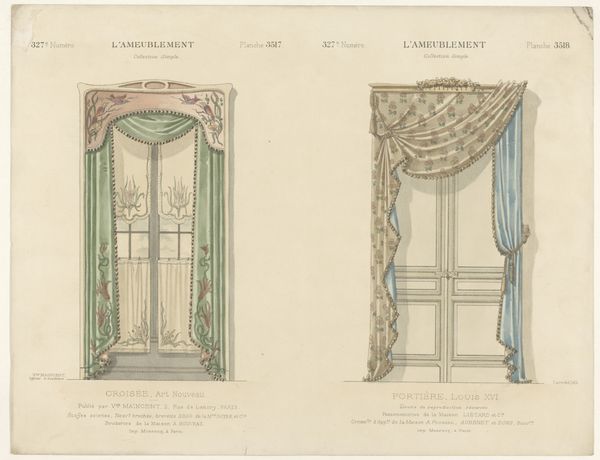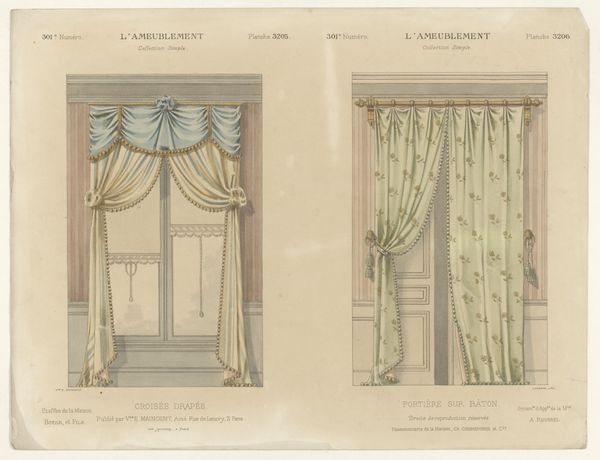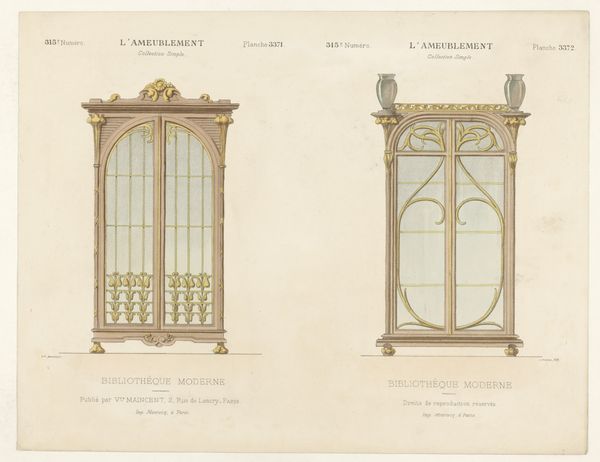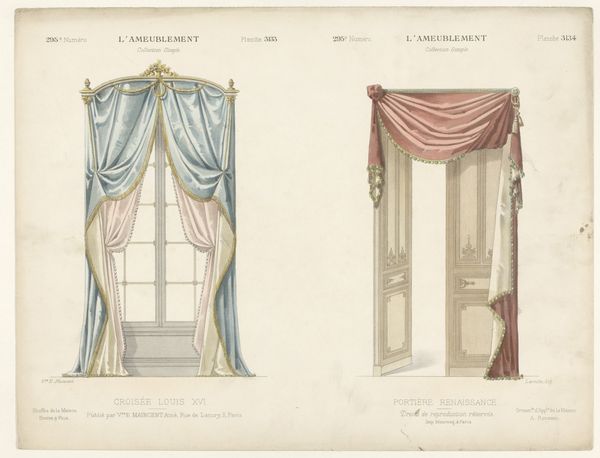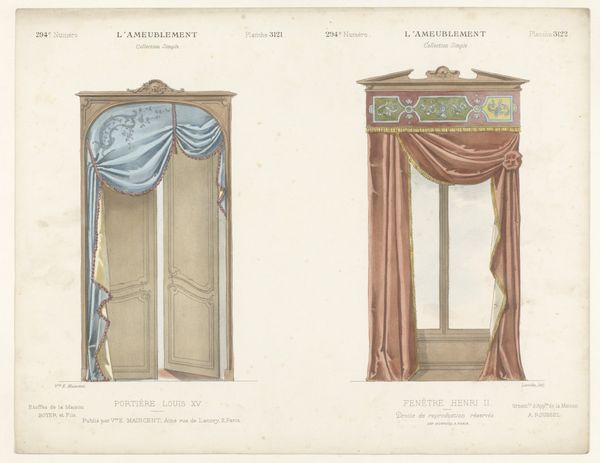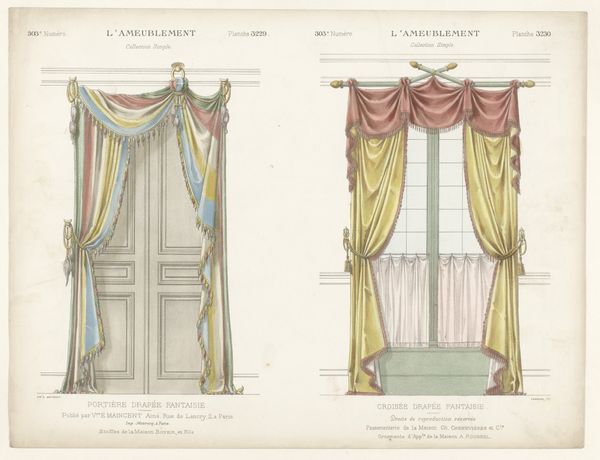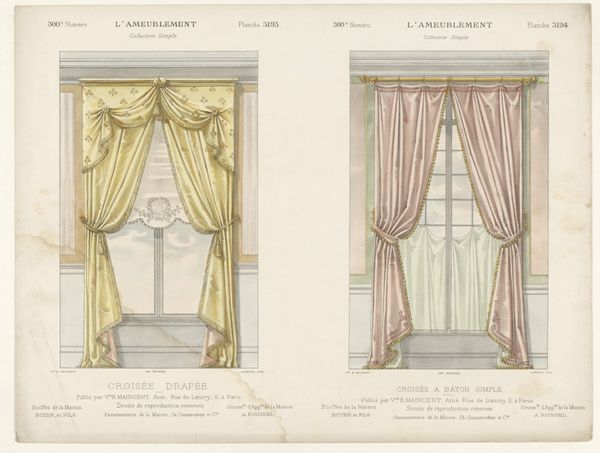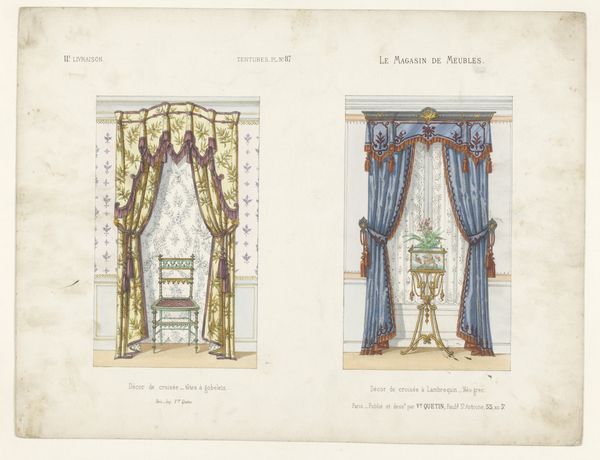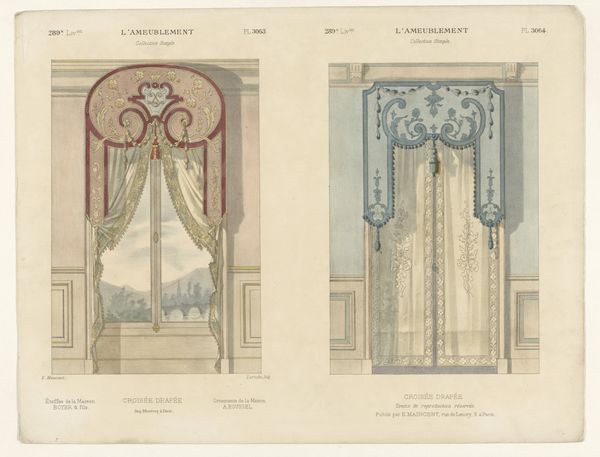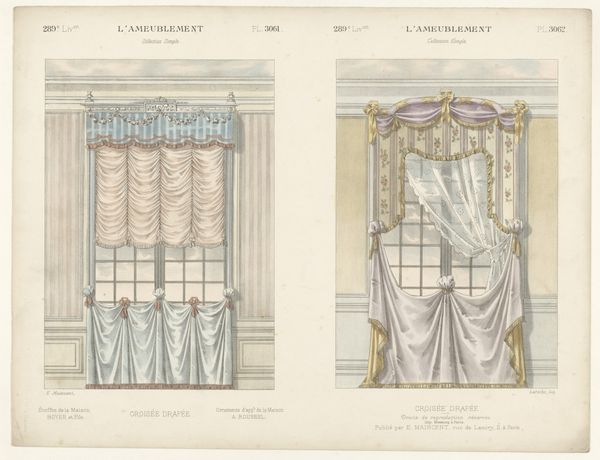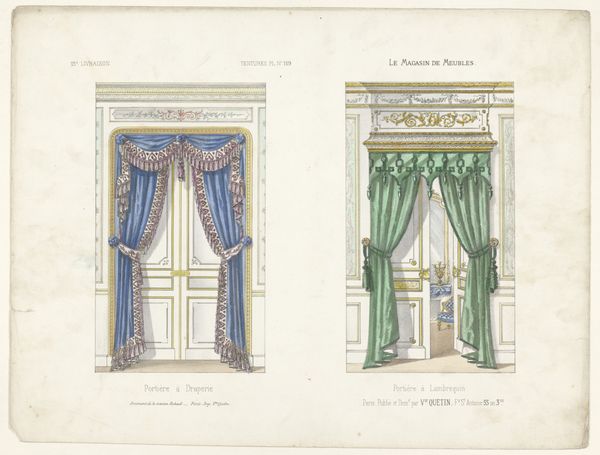
drawing, print, watercolor
#
drawing
#
art-nouveau
# print
#
watercolor
#
cityscape
#
watercolour illustration
#
decorative-art
#
watercolor
Dimensions: height 274 mm, width 357 mm
Copyright: Rijks Museum: Open Domain
Editor: This is Léon Laroche’s "Deur en venster met gordijnen," created in 1895. It’s a print, maybe a watercolor drawing, depicting decorative doorways or window designs. I'm struck by the pastel colors, especially the soft purples and blues, and how delicate the ornamentation seems. What do you see in this piece? Curator: I see a fascinating glimpse into the aesthetics of the late 19th century, an era grappling with rapid industrialization. These designs, infused with Art Nouveau and decorative art sensibilities, represent a longing for handcrafted beauty and a rejection of mass production. It reflects the anxieties about the changing roles within the household— the curtains themselves becoming a signifier of the family dynamic as it intersects with capitalism. How might the concept of ‘ameublement’—furnishing and belonging—be linked to societal class structures in Parisian society? Editor: So the detailed designs and use of color become almost like a… statement? Curator: Exactly. The emphasis on ornamentation, especially during the rise of industrial capitalism, speaks to an effort of reclaiming control over domestic spaces. The image is, however, overtly promoting a commercial company's trade— the designs themselves could easily reflect social aspirations to grandeur, even if achieved on a more modest, mass-produced scale. Considering the French social structure at this time, what kinds of social rituals may occur within those spaces? Editor: It's like these curtains and doorways aren't just functional; they're setting the stage for social performance. I never considered the broader political and societal meaning conveyed through these decorative arts! Curator: Absolutely, we cannot divorce visual art from the intersectional complexities of culture, philosophy, gender, and socio-political forces. Understanding how art connects and intersects on the fringes helps us understand ourselves and one another better. Editor: That really gives me a new appreciation for how decorative art can reflect much bigger cultural trends. Thanks!
Comments
No comments
Be the first to comment and join the conversation on the ultimate creative platform.
